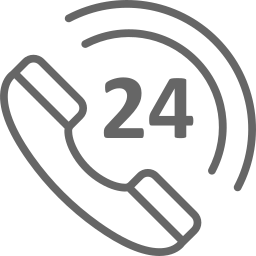There is a common distress that might be felt by some of the other children about having a difficulty to differentiate between male and females. This issues of not being able to differentiate between having identity crisis and physical characteristics can be a major underlying cause of persistent emotional distress in an individual. About 1.2 percentage of total Australian population of school children are identified to be having these thoughts (Quinn 2018, pp.1522-1534). Being a gender diverse person can be reflected as a natural spectrum of the human diversity, but it might not be able to reflect upon those positive inferences on the individual suffering from the same. Cultural and social norms regarding this issue are observed to vary from one culture to another, as per the common practices as well the already defined understating developed for this subject matter. The prevalence of this issue in respect with Australian cultural norms is quite scares. However, studies have shown that the current results might be much higher than anticipated. This can also be sometimes found to be related with an individual having current mental illness or having a history of the same in the family. The family conflicts have also been considered as one of the attributing factors to the development of this identity crisis in an individual.
There is a perceived inconsistency amongst the individuals facing this issue. They often find it hard to differentiate between their biological sex and the gender identity accepted by them. These symptoms have been seen to manifest right from a smaller age of 2-4 years with basic activity reflections, such as trying on different clothes apart from one’s own sex, engaging in gender specific activities and so on. However, the debilitating secondary changes tend to manifest at the age of puberty, which is tagged along with strong sexual observations as well.
One of the main possible outcome, as observed in these individuals includes cessation of desire to be with the opposite sex all together. With advancing age, the gravity of realization as well as understanding of the concept, concretes on. This is also a major hindrance in providing the individual with the required counselling. Irrespective of having or not having a therapeutic interventions these individuals can grow having an identity of gay, lesbian or being a bisexual. Studies have also shown that if the identity issues persist till puberty, they are very less likely to fade away and might be a permanent status of the individual suffering from the same (Persson 2020, pp.54-71).In adults however, the repercussions can also be seen in the form of mental illness. These individuals might look themselves as being discriminated and not accepted as an integral part of the society they dwell in. Due to their unique identity, they not only suffer from identity crisis but are also liable to be subjected to the anger and hatred showered by the society. Adults can also be observed to be struggling from the ambivalent gender identity tagged along with their sex characteristics.
Some of the individuals might also reflect upon marked exacerbations and remission periods of dysphoria, throughout the due course of their life (Jones 2016, pp. 156-171).Stigmatization and proper access to healthcare facilities is another trending issue that places a hurdle in tacking the personal differences of these individuals. Another issue bothering these individuals from expressing their selves completely is the family acceptance. The parents are the one who generally might fail to recognize these early signs till the issue paramount’s to a non-reversible situation. Not getting sufficient and deemed family support in such matters and situations poses a huge mental pressure on these individuals. This can also give rise to violence, due to build up repentance and agony in their minds, as a result of lack of support. The inculcation of various interventions can be helpful in cases of younger individuals but might not be as fruitful in adults. Community organizations are needed to support for both these individuals as well their families to help them with the smooth transition through this phase.
Jones, T., Smith, E., Ward, R., Dixon, J., Hillier, L. and Mitchell, A. 2016. School experiences of transgender and gender diverse students in Australia. Sex Education, 16(2), pp.156-171.
Persson, A., Newman, C.E., Rasmussen, M.L., Marshall, D., Cover, R. and Aggleton, P., 2020. Queerying notions of “difference” among two generations of Australians who do not identify heteronormatively. Sexuality & Culture, 24(1), pp.54-71.
Quinn, C., Platania?Phung, C., Bale, C., Happell, B. and Hughes, E., 2018. Understanding the current sexual health service provision for mental health consumers by nurses in mental health settings: findings from a survey in Australia and England. International journal of mental health nursing, 27(5), pp.1522-1534.
Remember, at the center of any academic work, lies clarity and evidence. Should you need further assistance, do look up to our Nursing Assignment Help
You Might Also Like
What Are Nursing Case Study Examples
Get Top-notch Nursing Assignment Writing

Get 24x7 instant assistance whenever you need.

Get affordable prices for your every assignment.

Assure you to deliver the assignment before the deadline

Get Plagiarism and AI content free Assignment

Get direct communication with experts immediately.
Secure Your Assignments
Just $10
Pay the rest on delivery*

It's Time To Find The Right Expert to Prepare Your Assignment!
Do not let assignment submission deadlines stress you out. Explore our professional assignment writing services with competitive rates today!
Secure Your Assignment!